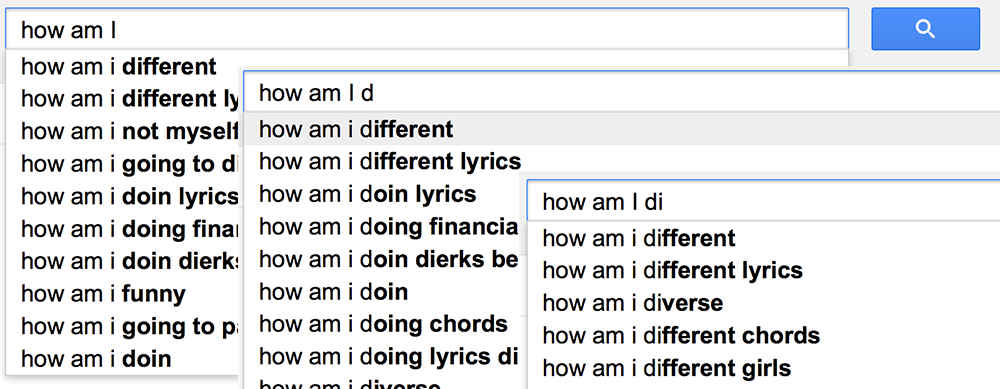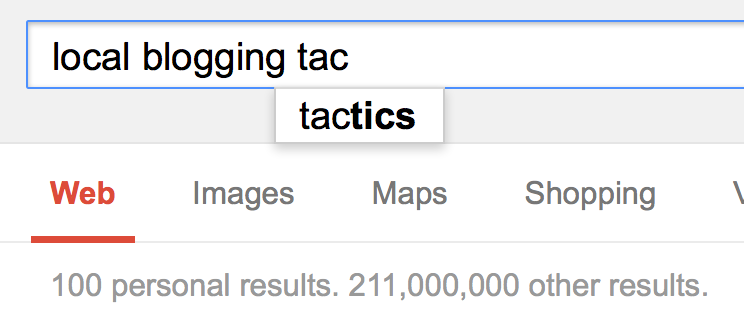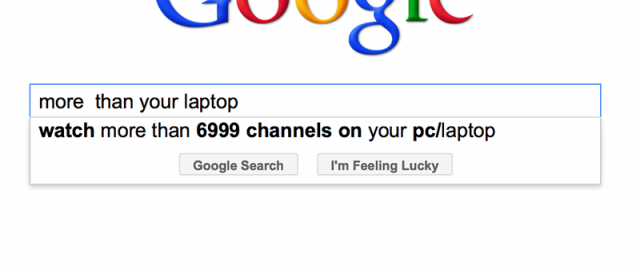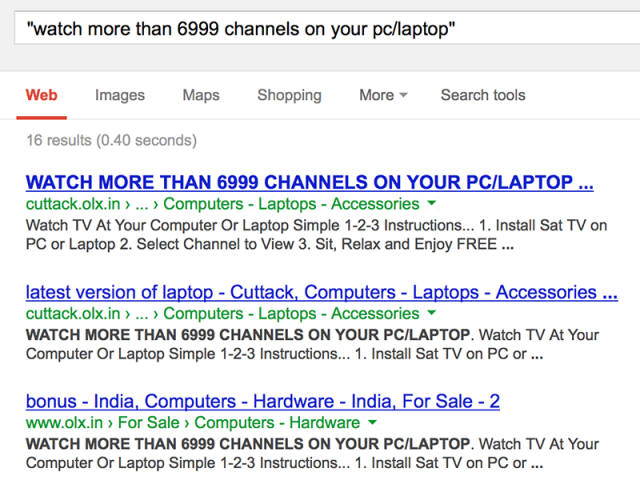In 2008 Google officially introduced one of its greatest features: as-you-type suggestions. It was initially based only on what people typed when searching for the same phrase as you were. It was an optional feature (you could switch it off easily using Google’s search settings).
Obviously, it was huge news for SEOs as search suggestions drastically affected the behavior of a user…
In 2010 suggestions were taken one step further when they started running Google Instant results.
With Google Instant, not only can you see search suggestions on the fly: You are actually performing a new search each time you are typing a new letter. Google Instant can be disabled, but Google Suggest has been a mandatory feature ever since.
It’s quite obvious Google is taking its Suggest feature very seriously and it’s quite obvious it’s a huge thing for SEOs!
(If you need a more detailed SEO history lesson, read my post at Threadwatch listing major events in search industry since 2007)
Understanding how search suggestions works is crucial for understanding how people search. So here you go…
There are (arguably) three types of Google search suggest results. Let’s look briefly at all three:
1. Traditional (Search/User-Based) Suggest Results
- Data source: User’s search behavior (The more people use a phrase when searching, the more chances it has to be suggested to other users)
- Match type: Exact
Google suggest is an awesome source of keyword research, brainstorming, content ideas, etc.
Here’s an old explanation from Google:
As you type into the search box, Google Suggest guesses what you’re typing and offers suggestions in real time. This is similar to Google’s “Did you mean?” feature that offers alternative spellings for your query after you search, except that it works in real time. For example, if you type “bass,” Google Suggest might offer a list of refinements that include “bass fishing” or “bass guitar.” Similarly, if you type in only part of a word, like “progr,” Google Suggest might offer you refinements like “programming,” “programming languages,” “progesterone,” or “progressive.” You can choose one by scrolling up or down the list with the arrow keys or mouse.
Note: Google Suggest now includes spelling corrections as well:
Related patents:
Useful: Empty space hack…
One limitation of Google Suggest is that it will always complete your phrase. What if you are stuck in-between your query? A cool hack is:
- Type your search phrase
- Come back in between
- Click “space” where you need more clues:
Personalization:
Mind that these suggestions may be different from user to use (based on the country you are in, device you are using, browser settings, etc). Related patent: Method and System for Autocompletion Using Ranked Results
Search suggestions may also include less popular phrases from your own search history if you are signed in to Google…
In addition, Google+ profiles can sometimes appear in autocomplete when you search for a person’s name. Related patent: Textual Disambiguation Using Social Connections
2. Partial Suggestions
- Data source: User’s search behavior
- Match type: Partial
Sometimes Google would suggest a word that’s related to the last word in the phrase, NOT the whole phrase.
For example, in the screenshot below, the word “tactics” relates to “blogging”, NOT the whole “local blogging” phrase:
Google’s official explanation of these (from the FAQ):
For certain queries, Google will show separate predictions for just the last few words. Below the word that you’re typing in the search box, you’ll see a smaller drop-down list containing predictions based only on the last words of your query. While each prediction shown in the drop-down list has been typed before by Google users or appears on the web, the combination of your primary text along with the completion may be unique.
3. Resource-Based (or Index/Document-Based) Suggestions
- Data source: Google’s index
- Match type: Partial
Sometimes, when you are searching for something long and weird, Google has no search data to help you. But it may go to its document index on the fly, find something similar from there and suggest you that. These are unofficially called resource-based suggestions:
Here’s the exact-match search for it:
Googlesystem explains this type very nicely: when Google doesn’t have a good suggestion, it will try to generate one based on popular n-grams from web pages. Important thing is that these also affect Google Instant and thus some of the long-tail phrases that may lead (or fail to lead) people to your site.
Are you aware of more Google Suggest types? Please share them in the comments below!
Further reading:
- Danny Sullivan’s How Google Suggest Works at @sengineland
- How to remove Google Suggest results by Lauren Starling of StarlingSEO










30 Responses
Three Types of Google Suggest Results @NinjasMarketing http://t.co/Y1IPY5UgMD
Three Types of Google Suggest Results @NinjasMarketing http://t.co/zzcG5ThWDg
Three Types of Google Suggest Results @NinjasMarketing http://t.co/LntEl7AoBe cc @jimboykin
Three Types of Google Suggest Results @NinjasMarketing http://t.co/tekdvDDmNY
Three Types of Google Suggest Results @NinjasMarketing http://t.co/eRA54JNZFm
Three Types of Google Suggest Results @NinjasMarketing http://t.co/H5kKzo5yed
Three Types of Google Suggest Results @NinjasMarketing http://t.co/wqErCLCj4g
Three Types of Google Suggest Results @NinjasMarketing http://t.co/XRScFdHEQb
Three Types of Google Suggest Results @NinjasMarketing http://t.co/ttMfynElUS
Three Types of Google Suggest Results @NinjasMarketing http://t.co/xfEgb1Lia7
Three Types of Google Suggest Results @NinjasMarketing http://t.co/q4ZP7KlcNA
Three Types of Google Suggest Results @NinjasMarketing http://t.co/rn8w3gWoRU
I use Jetpack, GA and AWStats to ID what longtails people use to find my site and use the top 20 terms to build my editorial calendar
Three Types of Google Suggest Results @NinjasMarketing http://t.co/d0Wdmh96JN
RT @the_gman: Three Types of Google Suggest Results @NinjasMarketing http://t.co/d0Wdmh96JN
RT @the_gman: Three Types of Google Suggest Results @NinjasMarketing http://t.co/d0Wdmh96JN
Three Types of Google Suggest Results: good read for a refresh if you didn’t already know. http://t.co/UV7vRnazML
Three Types of Google Suggest Results http://t.co/GdGaK7ewuU by @SEOsmarty
Three Types of Google Suggest Results from Ann Smarty: http://t.co/Ce8gpvJDYN
What many people don’t realize is how detrimental this is to small businesses and freedom of choice. It is yet one more way for multi-national corporations to funnel all the money to themselves. In doing so, they destroy small businesses, reducing our freedom of choice and eliminating ways for us to make a living outside the corporate world.
I encourage everyone to support small businesses – both local and online – because if we do not INCREASE using them they will go away and eventually there will only be ONE store and NO choices.
Three Types of Google Suggest Results from Ann Smarty: http://t.co/IoAp3cfCJi
There are 3 types of Google search suggest results: 1.Traditional 2.Partial and 3. Resource-Based Suggestions http://t.co/5SVJplmzwI
Three Types of Google Suggest Results http://t.co/iUvDhTlnuX via @zite
Awesome post by @SEOSmarty Three Types of Google Suggest Results http://t.co/IzDNkReua6
Three Types of Google Suggest Results by @SEOSmarty http://t.co/3IDEL2VP3C See my comment on the dangers of Google Suggest #SEO
RT @GrowMap: Three Types of Google Suggest Results by @SEOSmarty http://t.co/3IDEL2VP3C See my comment on the dangers of Google Suggest #SEO
Three Types of Google Suggest Results by @seosmarty via @NinjasMarketing http://t.co/gBGdalrSl4
RT @GrowMap: Three Types of Google Suggest Results by @SEOSmarty http://t.co/GEl3WmrkDu
Adrian Frank Consulting liked this on Facebook.
Three Types of #Google+ Suggest Results – http://t.co/ZYepjGOg4A
Comments are closed.